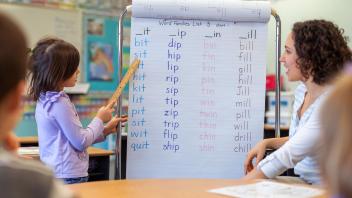Key elements of effective scope and sequence
Schools and districts rely on their state or national standards to guide what they expect children to know about reading, spelling, and writing at each grade. Although there is not a universally accepted scope and sequence for teaching reading, most educators and researchers agree that the science behind learning to read is both the centerpiece and driver for developing a scope and sequence for instruction.
The scope and sequence used by your school should address the five components of reading (phonological and phonemic awareness, phonics, fluency, vocabulary, and comprehension) and encourage systematic, explicit instruction for learning how to decode words and how to comprehend texts. A scope and sequence should address all the elements of speaking, listening, reading, writing, and spelling that are necessary for most of your learners. It should include opportunities for daily, weekly, and cumulative practice and review across the grades.
Resources for evaluating your own school’s scope and sequence of instruction
- The Reading League offers free curriculum evaluation guidelines to evaluate whether a reading program aligns with the Simple View of Reading framework and evidence-based instruction.
- The University of Oregon’s Center on Teaching and Learning provides free materials and a comprehensive Consumer’s Guide for schools and districts to evaluate their curriculum content and core reading programs.
To see an example of the U.S. national standards for teaching literacy PK-12, see the Common Core State Standards (CCSS) and view what’s expected for your child’s grade level. Each state in the U.S. has adopted either the CCSS or their own state standards.
Examples of phonics scope and sequence
These are not intended to be definitive — they are offered as examples to consider.
From our sister project, Reading Universe
This continuum displays the phonological awareness and phonics skills that all students need to master in order to become confident and fluent readers.
Other examples
- Sample Phonics Scope and Sequence (Fairleigh Dickinson Center for Dyslexia Studies)
- Systematic Phonics Scope and Sequence (Keys to Literacy)
- Suggested Scope and Sequence for Teaching Phoneme-Grapheme Correspondences (University of Florida Literacy Institute)
- Scope and Sequence: (1) Phonics and (2) From Sound to Syntax (Sortegories)
Learn more
Shanahan on Literacy
What Is the Proper Sequence to Teach Reading Skills?
Shanahan on Literacy
How Much Phonics Should I Teach?
Phonics and Decoding
A New Model for Teaching High-Frequency Words
Reading and Writing Basics




